by James Mayfield (Chairman, European Heritage Library)
This is a gallery of resplendent examples of the distinct Arabo-Moorish architecture of the southern Spanish autonomous province of Andalusia. Its artwork, culture, and dialect are distinct from the remaining autonomous provinces of Spain, such as the Basque Country, Galicia, and Catalonia.
The nation that is now Spain was dominated by Muslims for 700 years, starting with the obliteration of the Catholic Visigothic Empire by invading armies from Morocco in the 8th century. Most of the remainder of Iberia (the Spanish peninsula) was spared Islamic rule due to the intervention of smaller Spanish principalities, the Portuguese, and the Frankish Empire. The southern marches remained firmly entrenched in the dominion of al-Andalus (hence the modern provincial name Andalusia) until the 11th century. See our video on this inter-religious conflict in Spanish history. This early period of Islamic occupation had greater interest in income from taxation of non-Muslims (jizyah) than fostering the propagation of Islam, and was unusual among Muslim polities for its liberality towards non-Muslim minorities. Al-Andalus became famous for creating some of the most magnificent works of architectural art in the world. See our map of Islamic conquest in Europe for more information.
This era of unusual tolerance was short-lived, and after 1040, invading legions from Morocco destroyed this Muslim polity in Andalusia and established the Almoravid and Almohad dynasties. These two regimes increasingly imposed strict Islamic rule that greatly discriminated against Jews and Christians at the same time as it sought to purify the adultertation of Islam of which the caliphate of al-Andalus (Cordoba) was guilty. Christian churches were burnt and replaced by mosques, and al-Andalus became a far more conservative and intolerant place. The capital of this Islamist Almohad caliphate was Seville. It was against this era of foreign Islamic occupation that the native Iberian Christian powers was finally able to unite and initiate the Reconquista (reconquest of Iberia). By 1492, the occupying Muslim armies were expelled along with the unification of Spain under Ferdinand and Isabella. Nearly all the Muslims and Jews of Spain were expelled and suffered intense discrimination that greatly contrasted the irreligious liberality of Islamic al-Andalus (Cordoba) but very closely paralleled the brutally anti-Christian Islamic rule of the Almohad Muslims. The Almohad capital of Seville additionally became the Spanish capital. In Seville today, many of the churches were built over the foundations of destroyed mosques, which in turn were built over the ruins of destroyed Christian churches. The main cathedral of Seville, the most resplendent, even retains a minaret from the old mosque.
Andalusia today expresses an eclectic architecture blending elements of the era of Islamic occupation and native Spanish culture. Early cathedrals built during the Reconquista (shown below) blatantly bear only Christian and Spanish artistic designs that eschewed any association with the occupying Moors. Later, as al-Andalus became firmly incorporated into unified Christian Spain, the region began to express its own cultural composite of Arab and Spanish architecture as is blatantly evident today throughout modern Seville and Andalusia. The royal palace of the Almohad kings, the Royal Alcazar, can be toured in near-flawless condition. After the Muslims were expelled, the Spanish royal house often resided in the Alcazar. The Qur'anic calligraphy was retained, including the Shahadah ("la-illaha illa Allah, Muhammadan rasulallah"/there is only one God, Muhammad is his Prophet). The pamphlets of the palace emphasize that most of the foundations were built by the Muslim Almohads, but most of the intricate artwork of this magnificent palace was built not by Muslims, but by native Spaniards after the Reconquista.
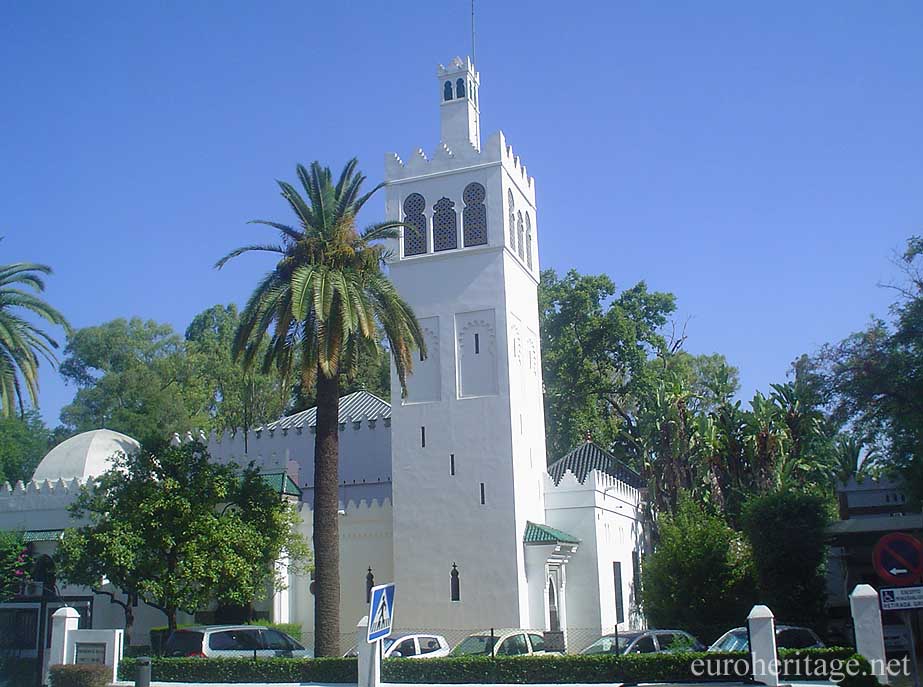
My photo of the achitecture of the southern Spanish autonomous province of Andalusia has its own distinct architecture that blends Castilian and Arabo-Moorish characteristics (Click to enlarge)
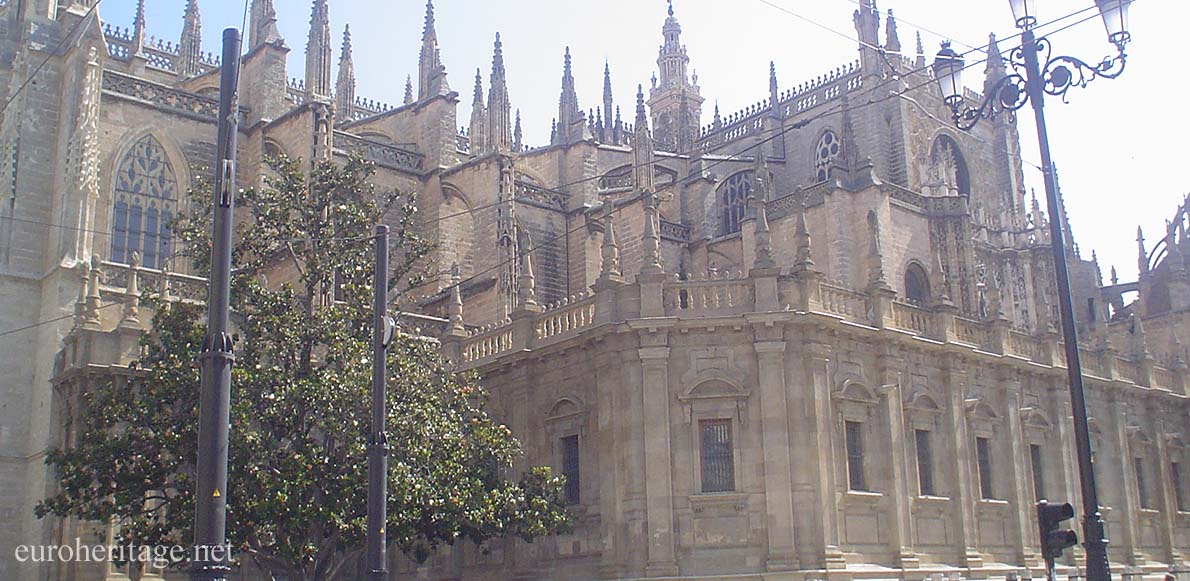
One of the most ornate and elaborate of all cathedrals of Spain, it was built during the expulsion of occupying Muslims during the Reconquista. It was built over the foundation of a mosque, and its minaret was kept almost unchanged (Click to enlarge)
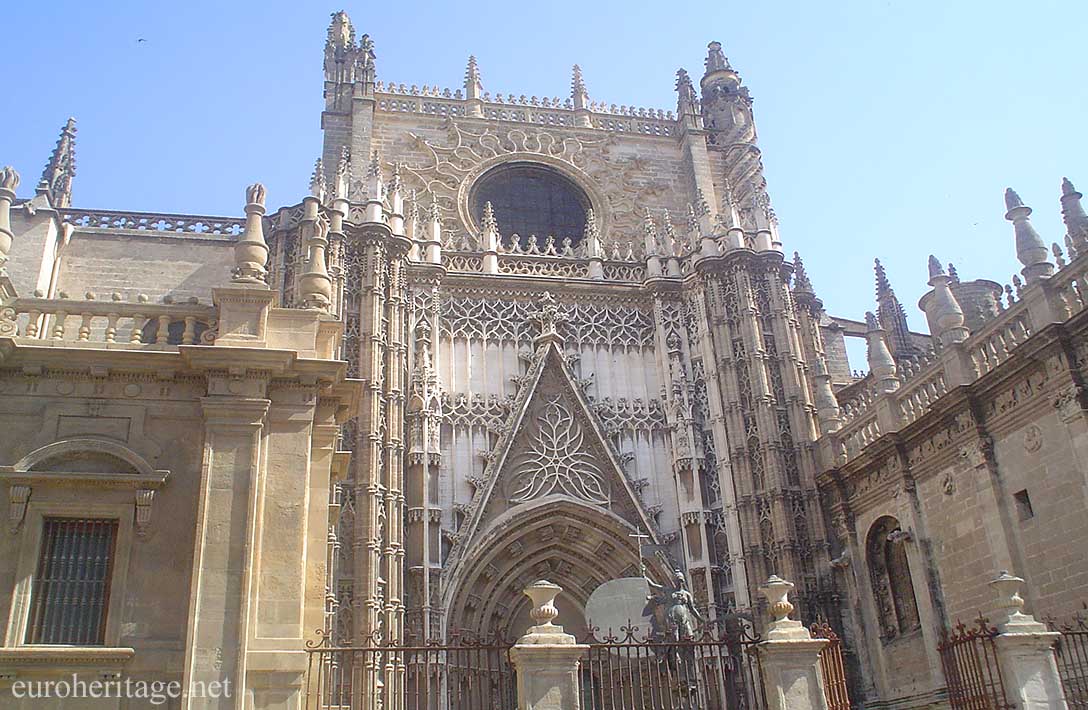
The front of the resplendent cathedral. Castilian, non-Moorish architecture was emphasized during the Reconquista. With Andalusia's historical evolution, however, the Spaniards of this region returned to a composite of the two architectural forms (Click to enlarge)
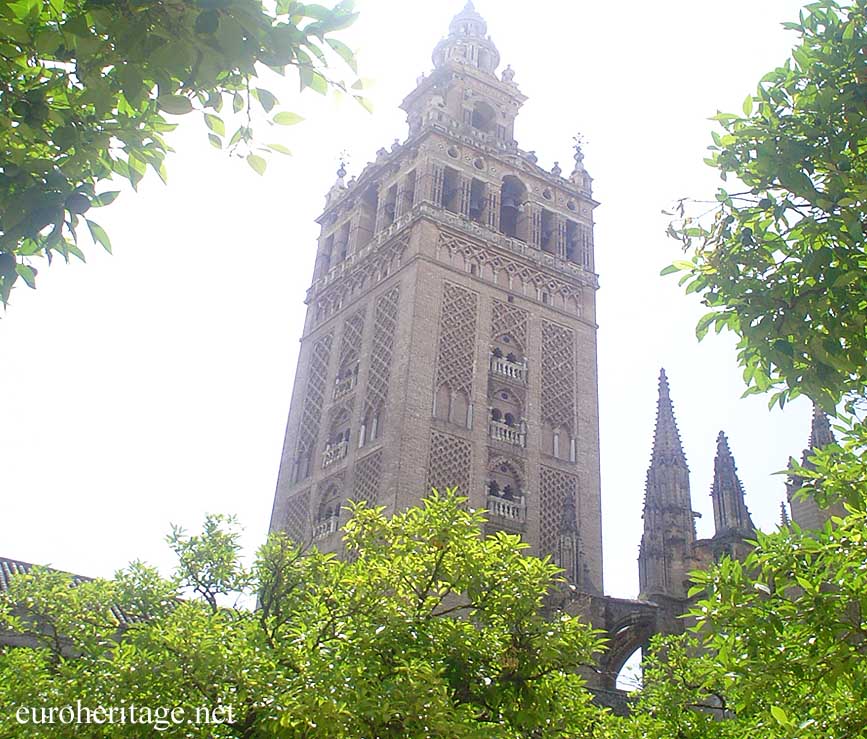
The minaret of the former mosque was kept, and is abnormally large since it was intended to allow two horses to ride to the top to deliver the prayer-call (adhan) (click to enlarge)
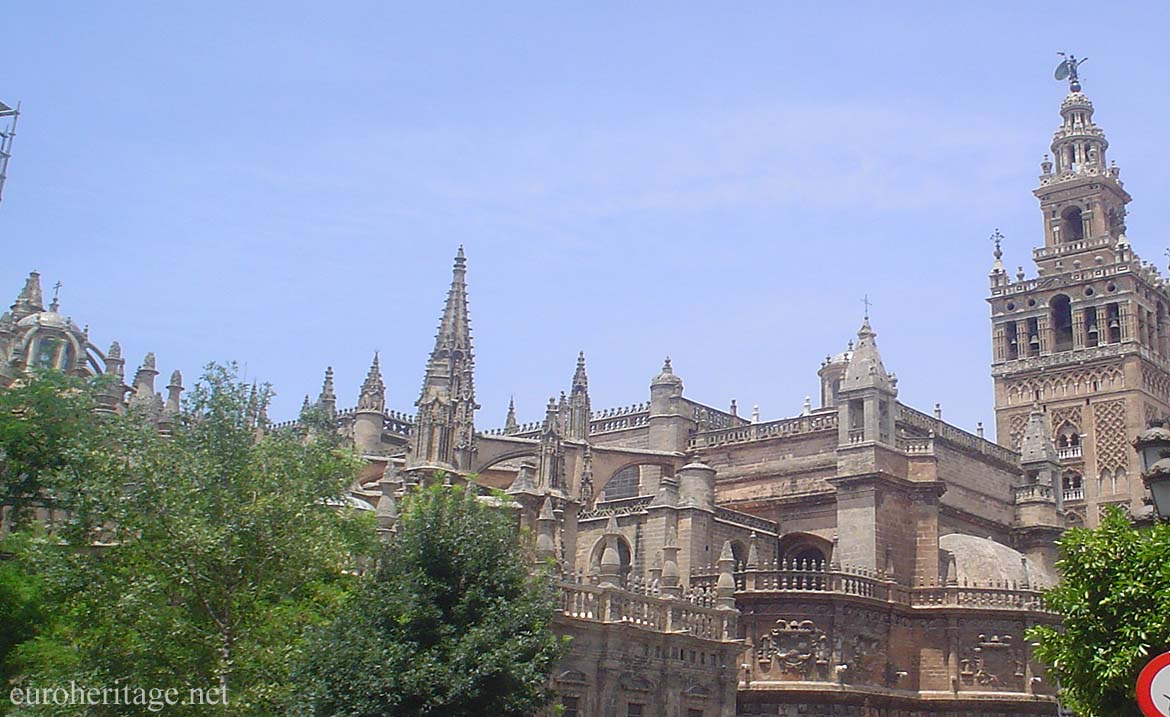
A view of the massive Christian cathedral alongside the minaret of the felled mosque
(click to enlarge)
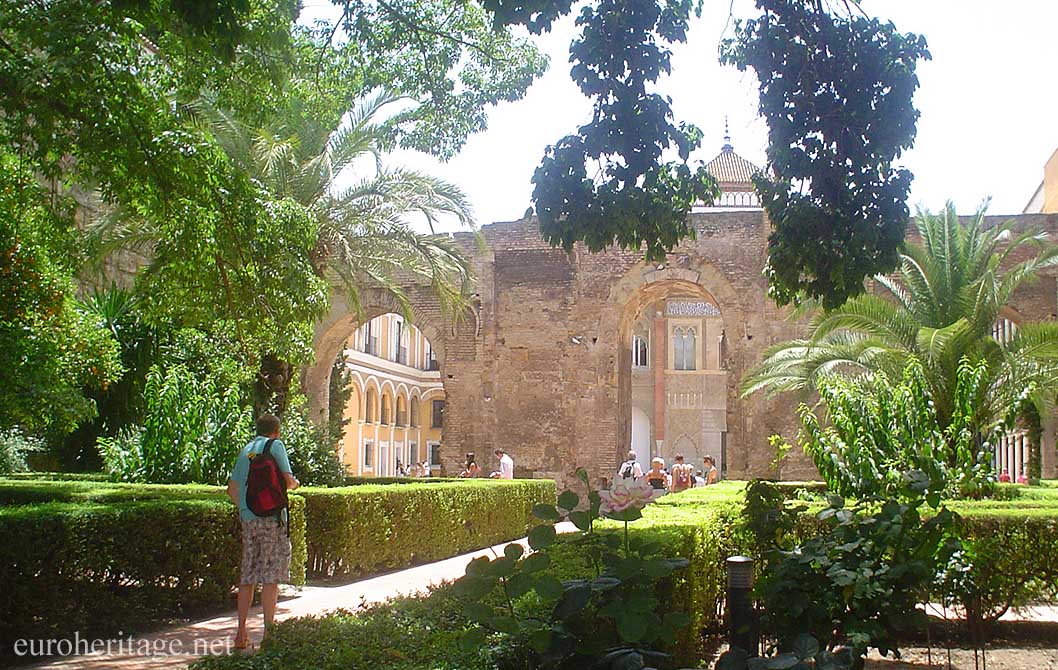
The promenade and royal gardens of the former Islamist Almohad khalifa
(click to enlarge)
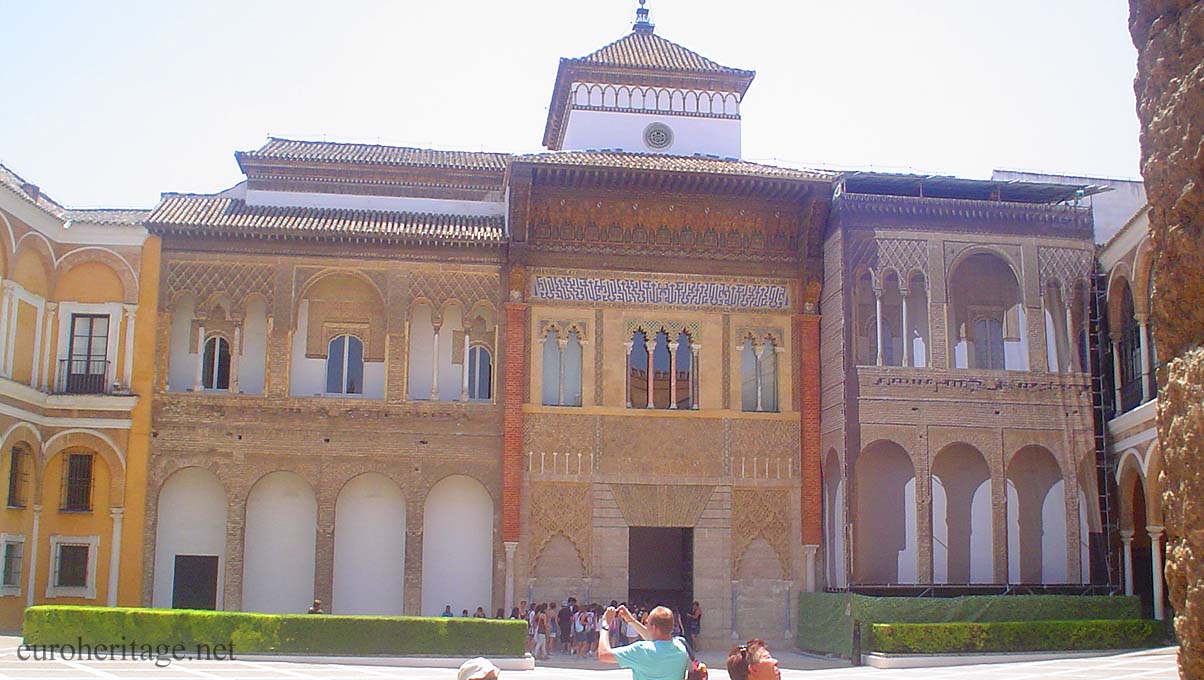
The royal palace of the Almohads is surpisingly large and ornate. The original Arabic and Qur'anic calligraphy was retained even after the Christian expulsion of the occupying Muslims (click to enlarge)
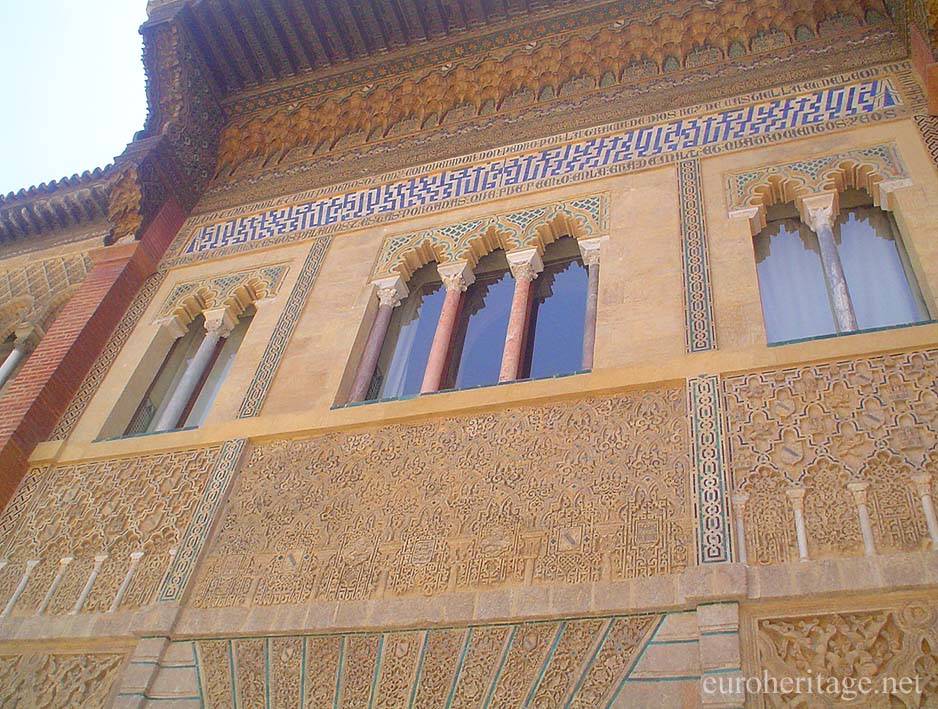
A close-up of the calligraphy, with many ayah (verses) from the Qur'an (click to enlarge)
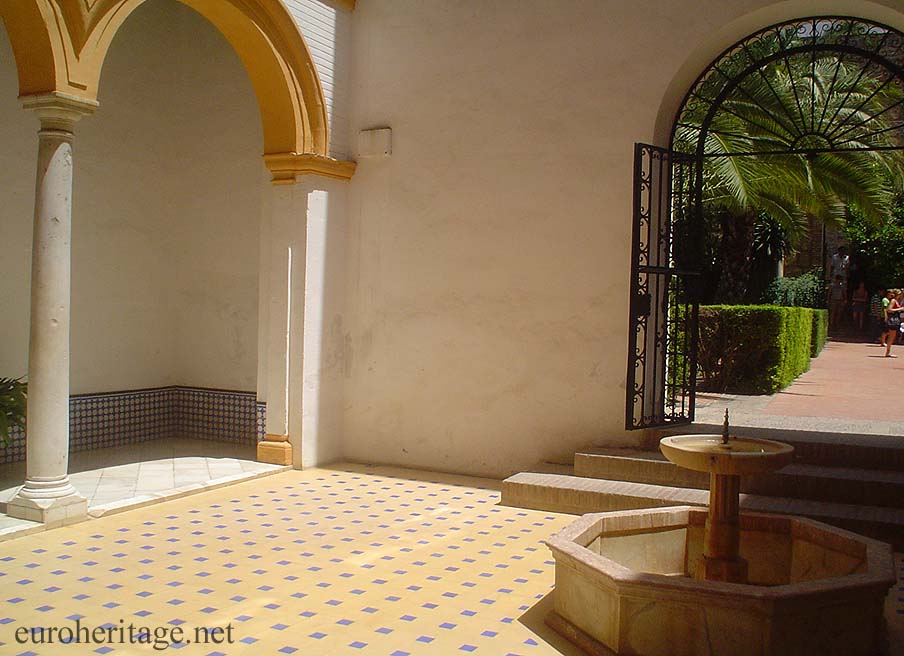
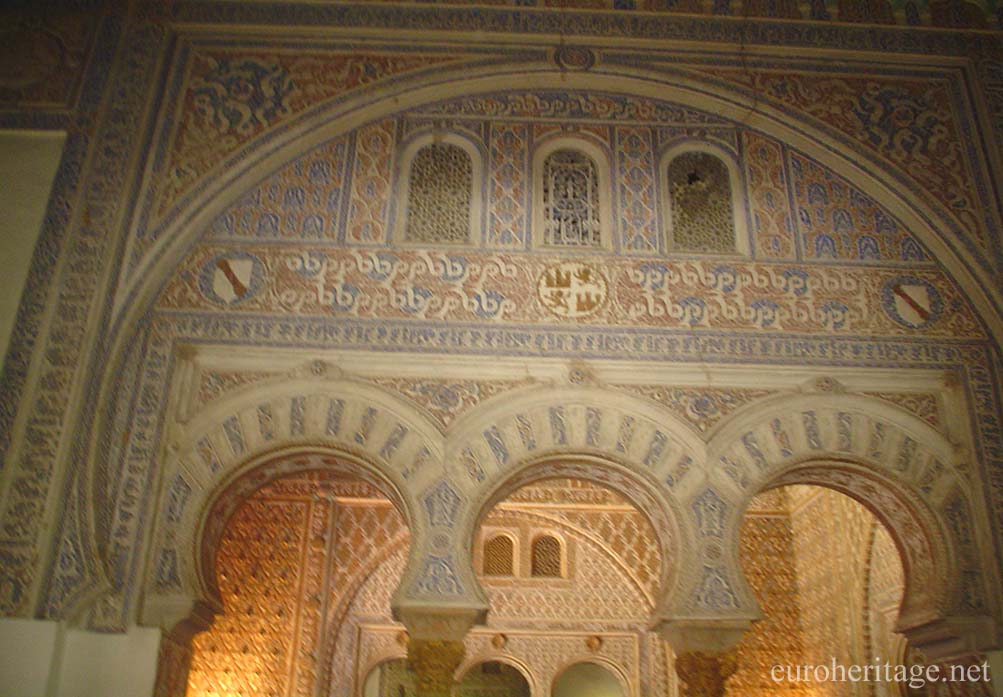
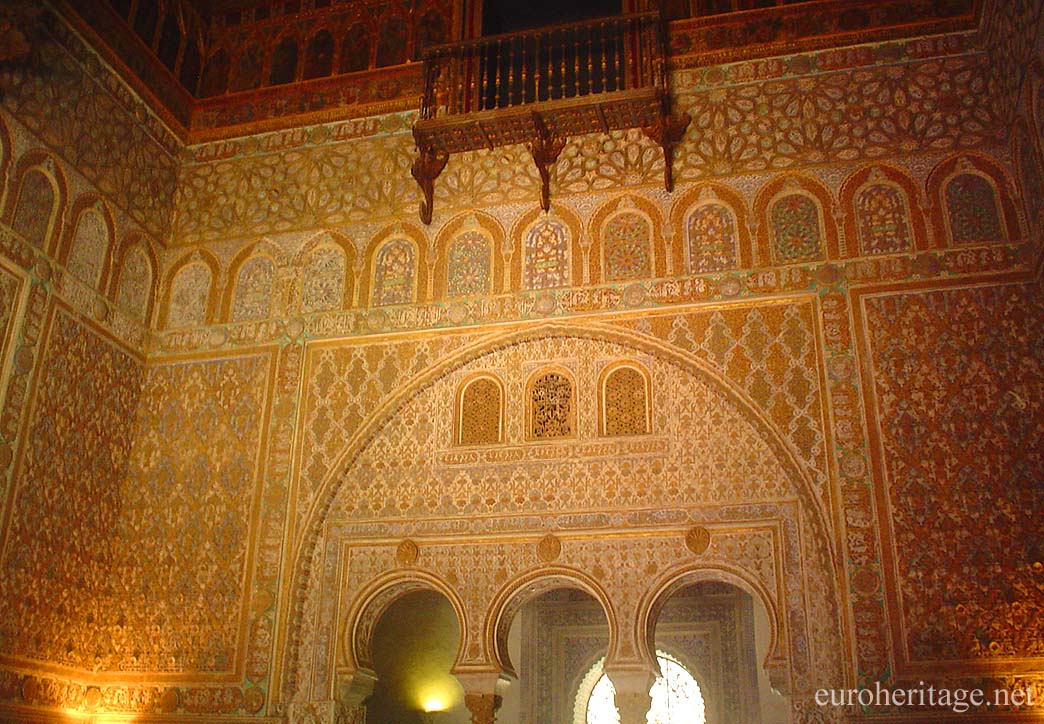
The literature of the complex emphasizes that most of the foundations were produced by the Muslims, but most of the remaining artistic material (as seen especially in this room) was produced after the Muslims were gone by the Spaniards (click to enlarge)
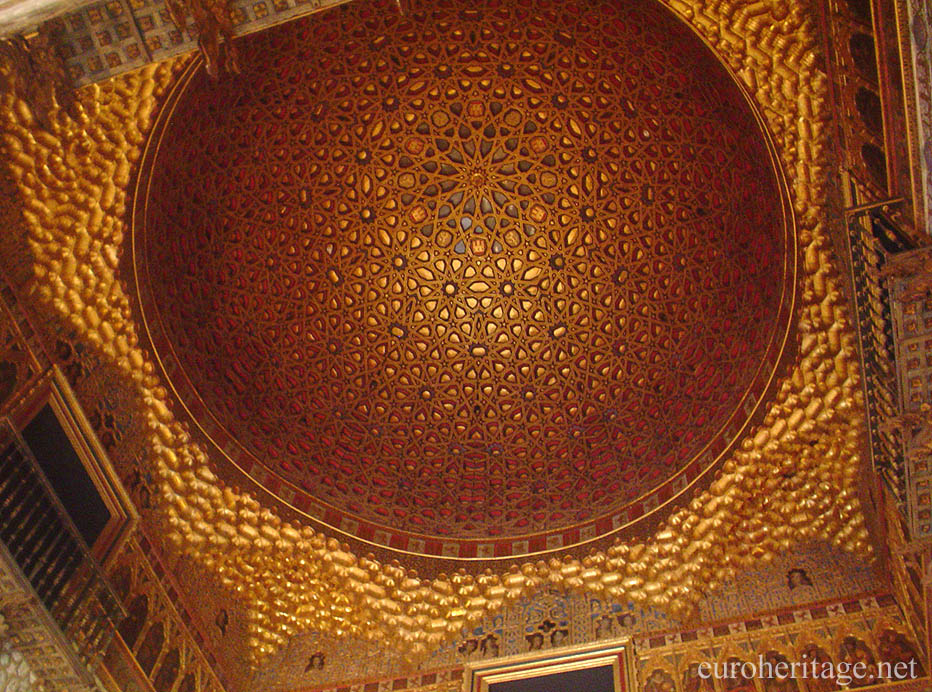
The dome in the center of the Royal Alcazar, truly radiant. Most of the intricate artwork was done by the Spaniards (click to enlarge)
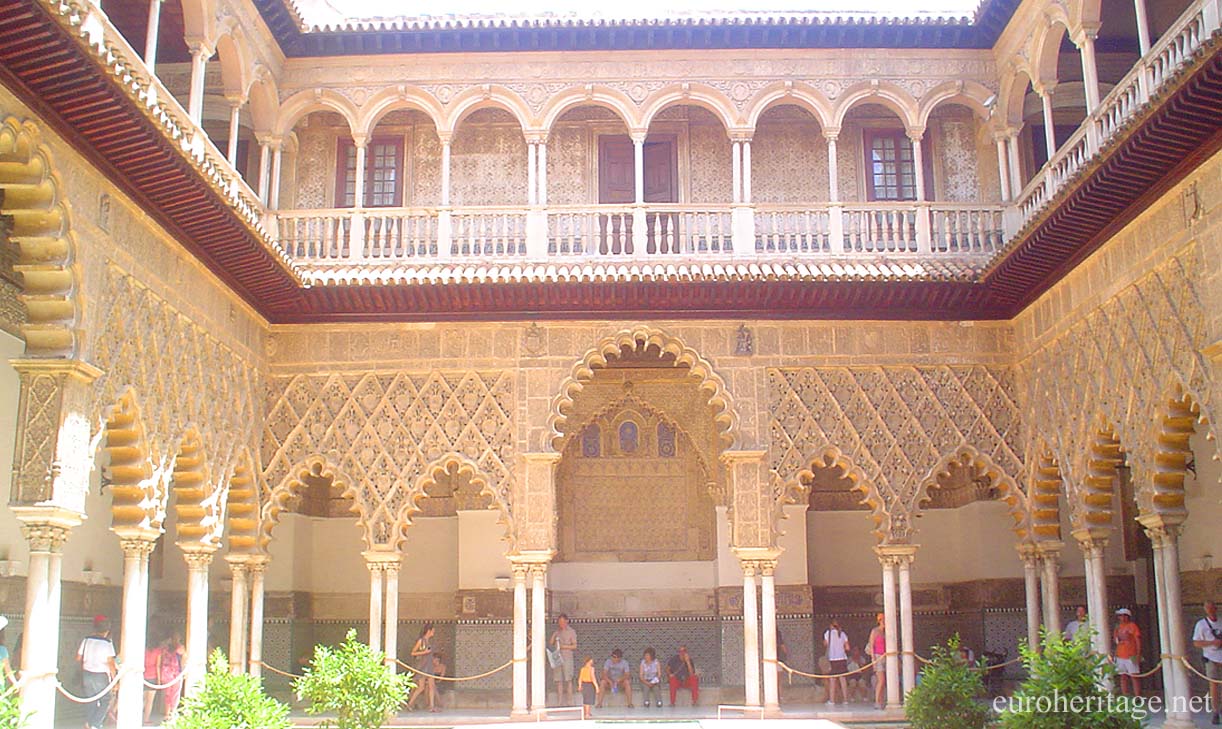
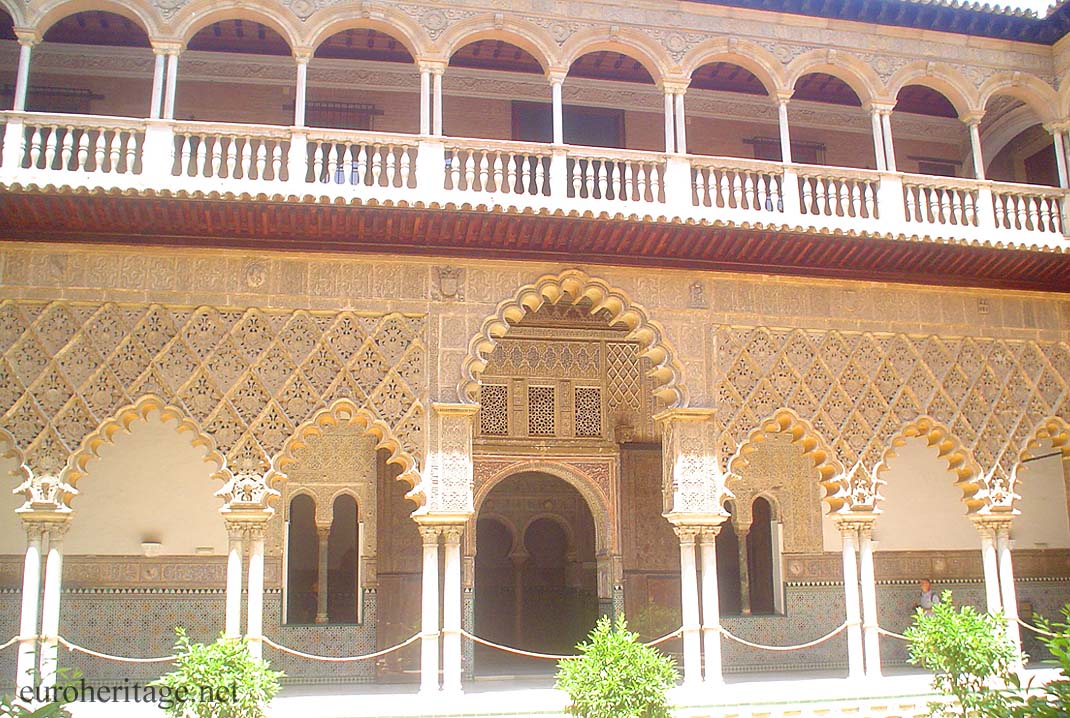
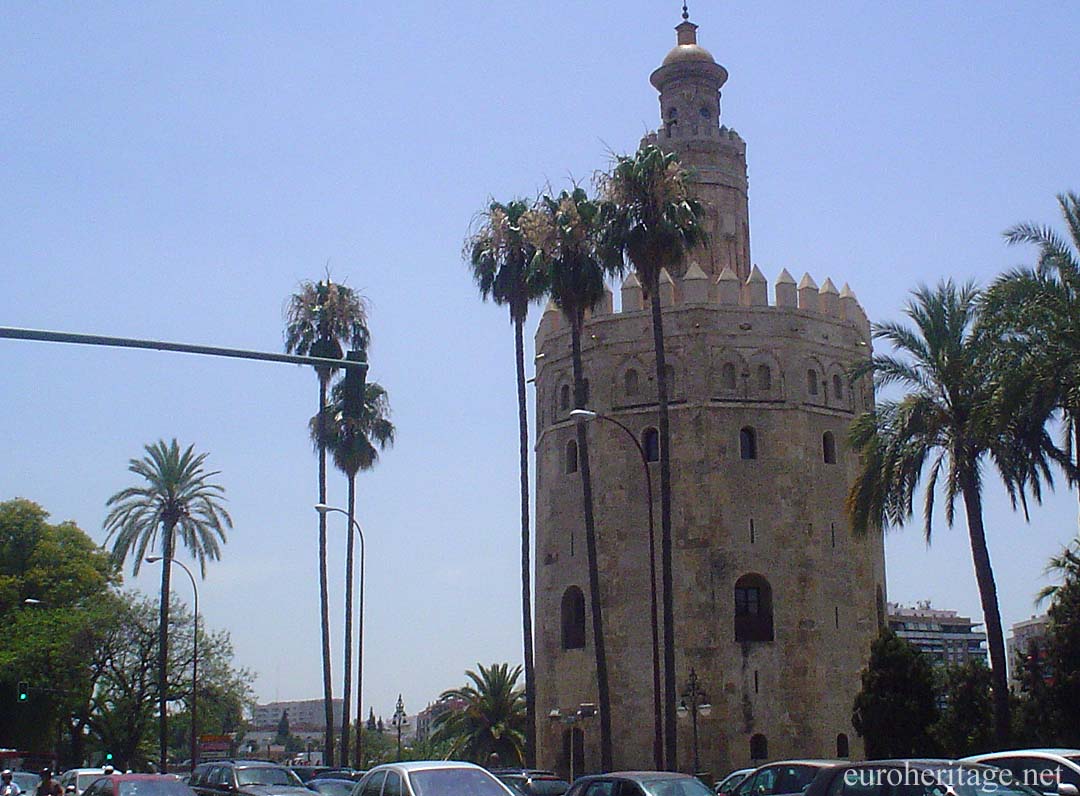
The Toro de Oro, a very wide watch tower built during the Islamic period of Andalusia. Its function has been debated. Some emphasize its purposes for security, others claim that it was used to monitor the morality and dress of the passing population. This seems rather retrojective, however. (click to enlarge)
________________________________________
ABOUT THE AUTHOR:
James Mayfield is a historian and the Chairman of the European Heritage Library. I have a Cum Laude BA in History with a Minor in Germanic Studies (language and history), am presently working for my Masters in History, and plan to immediately progress to my PhD Doctorate. I have a special academic interest in Europe's diverse ethnic identities, languages, and cultures, and the political struggles of native European and immigrant minority identities. See my staff entry for more information.

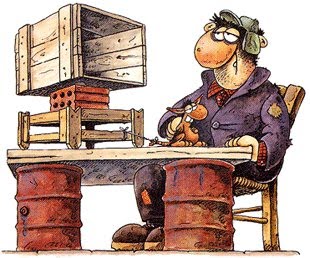
0 σχόλια:
Post a Comment